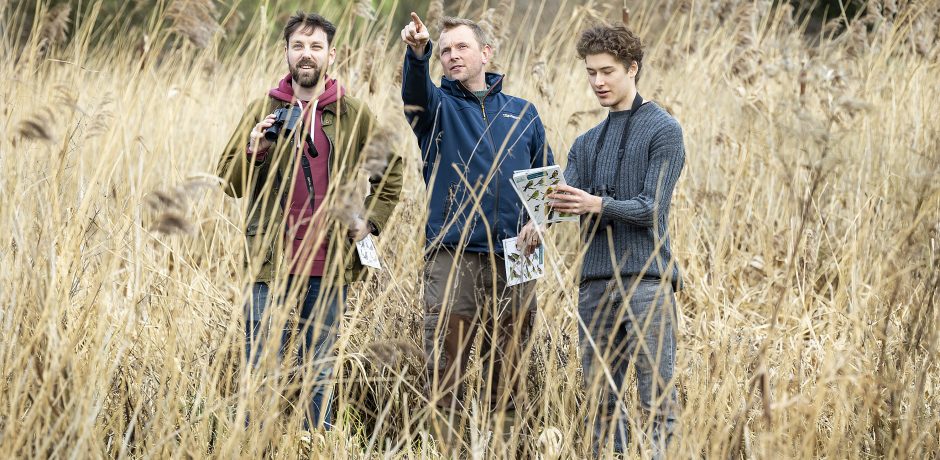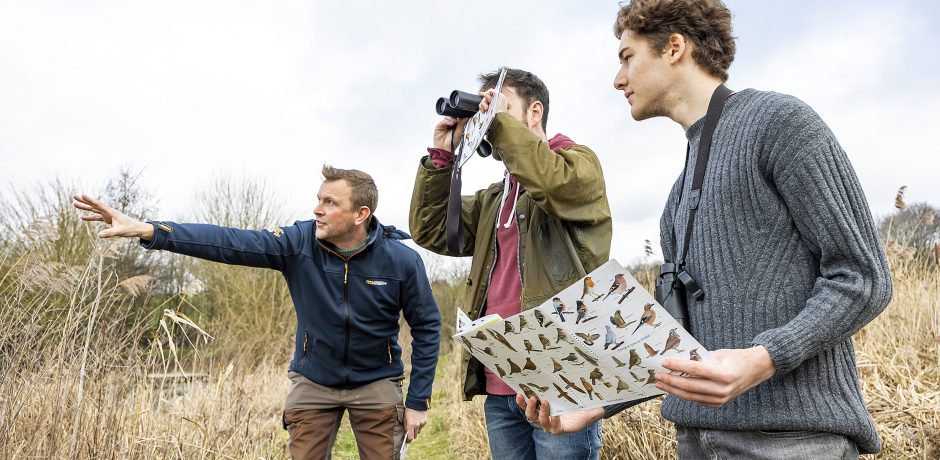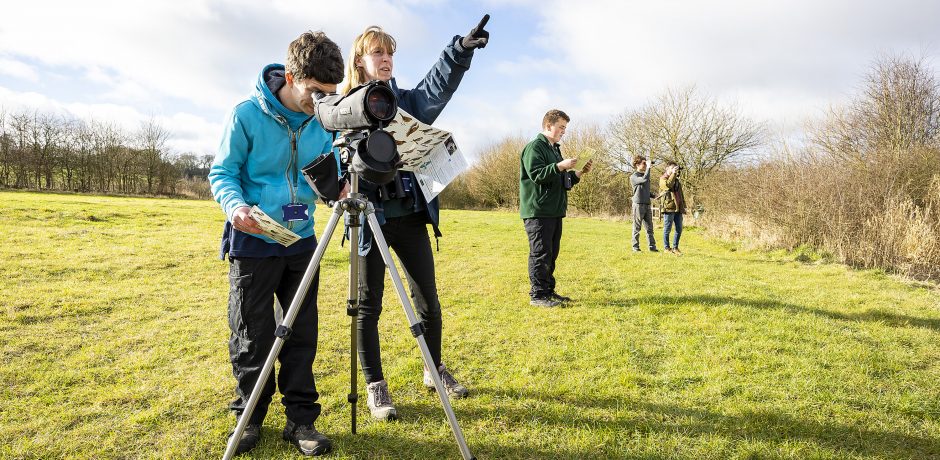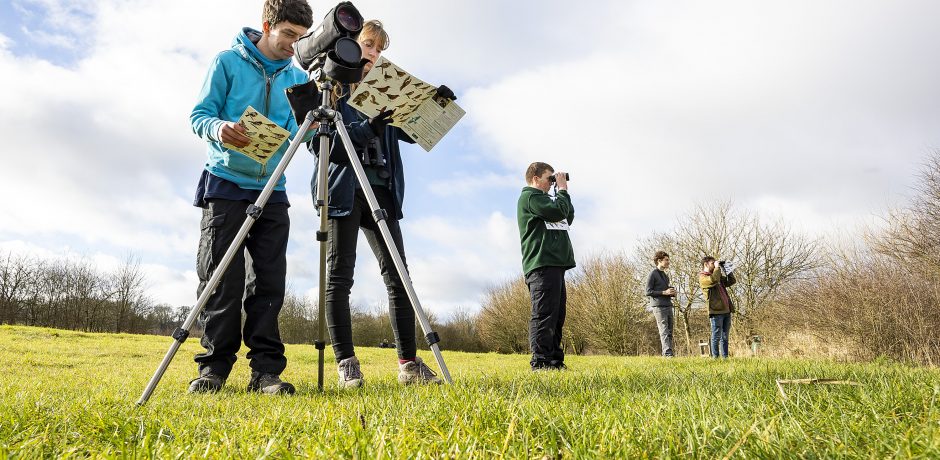Sponsored by the NFU.
A call has gone out to the UK’s farmers, gamekeepers and land managers to take part in the GWCT Big Farmland Bird Count in 2022 from 4 – 20 February and Sparsholt College Group staff and students are eagerly taking part at the launch of such an important environmental project.
A number of year groups across Sparsholt College’s Land and Wildlife courses have been carefully learning the GWCT methodology in their classes before heading out on Sparsholt 183-hectare campus when the count launches to make a real difference to the UK’s songbirds.
The Big Farmland Bird Count has been organised by the GWCT every year since 2014 to encourage farmers and gamekeepers to support farmland birds and highlight the hard work already done by many of them to help reverse species’ declines. The count also gives a vital national snapshot of the health of the UK’s birdlife.
For the fourth year running 2022’s count is sponsored by the National Farmers’ Union (NFU), demonstrating the farming community’s commitment to conserving farmland birds. NFU president Minette Batters, said: “2021’s results were fantastic with farmers and growers across the country responding to the count in record numbers.
“Farmers and gamekeepers are vital in helping to ensure the survival of many of our cherished farmland bird species such as skylark, yellowhammer, corn buntings and wild grey partridges,” said the Game & Wildlife Conservation Trust’s Dr Roger Draycott, who runs the count. “They are responsible for managing the largest songbird habitat in this country on their land, so they are in a position to make a real difference.”
“Not only are farmers producing climate-friendly food, they are also maintaining and protecting the great British countryside, creating habitats for wildlife and additional feeding for farmland birds. I encourage all farmers to get involved in the 2022 GWCT Big Farmland Bird Count.”
Dave Lock, Curriculum Leader for Land and Wildlife courses at Sparsholt College commented, “the GWCT’s Big Farmland Bird Count is such a fantastic project to inspire our students with. As the Land Managers, Farmers and Conservationists of the future, they are so passionate about the natural world around them and are keen to make a real difference in the work that they do and will continue to do as they pursue their own careers in the rural sector. We can’t wait to monitor our populations across our countryside campus again this year and record the wide variety of species that call Sparsholt College their home.”
To take part:
Simply download a count sheet from bfbc.org.uk and spend just 30 minutes between 4 and 20 February counting birds on one spot on farm, plus a few minutes inputting results via the website. Guides to counting and identifying birds, biodiversity-boosting tips, and more details on taking part are all available on the website. Participants are encouraged to share photos or videos of themselves counting on social media using #bfbc.
Boosting biodiversity:
For land managers keen to support wild birds, a few small changes can have a significant impact. The GWCT’s Advisory team offers advice on improving biodiversity on farms and shoots.
“Modern farming methods mean that there is often not enough natural food for wildlife left in the countryside in late winter and early spring,” said Roger Draycott. “One of the best ways to support wild and game birds is to provide extra winter seed food. Supplementary feeding is particularly beneficial for birds of conservation concern like grey partridge, yellowhammer and corn bunting.”
The use of ‘conservation headlands’ – wide field margins where little or no pesticides are used – is also very good for farmland birds. Allowing broad-leaved weeds to flourish boosts insect populations which are a key food-source for birds. Planting and managing hedgerows also provides crucial food, as well as nesting habitat and a safe haven from predators.
GWCT advisors also encourage land managers to maintain small wet areas around the farm, such as ditches, scrapes and even old horse ponds. These can help to attract wading birds and provide nesting and foraging sites for a range of birds, including threatened species like snipe and lapwing.
By leaving an area of uncropped, cultivated land farmers can provide suitable nesting and foraging areas for birds which prefer to forage on open ground, such as the red-listed lapwing, skylark, stone curlew and turtle dove.



